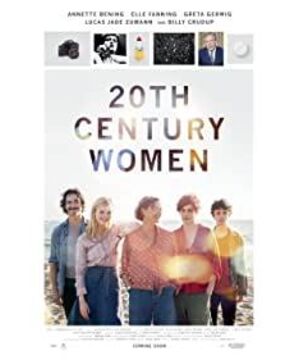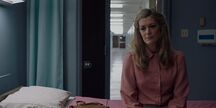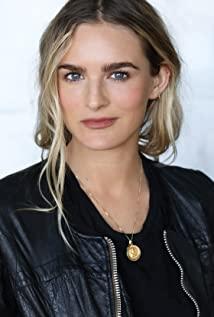We saw the 55-year-old Dorothea (played by Annette Bening, who once played the spurned wife in "American Beauty")—the smoky mother who said, "The smoke is Salems, because she is healthier; the shoes she wears are Birkenstocks, because she is a modern person; she reads "Rabbit Republic" (by the way, the animated film of the same name adapted from this book is a magical existence), and then teaches herself how to use wood carving Out of the rabbit. She never keeps a long relationship with a man." At least in the eyes of the fifteen-year-old protagonist Jamie (newcomer Lucas Jade Zuman), her mother is such a woman.
We saw the seventeen-year-old Julie (played by Elle Fanning, who played the leading role in the controversial work "Neon Demon")-this self-proclaimed mature, the audience saw her in the first act The girl with a cigarette in it, "likes to say that she is self-destructive; her mother is a psychologist, so she was forced to attend her consultation meeting; she started flirting with different boys, she started sneaking into my house and spending the night in my house." Of course, Jamie knew well that she sneaked in at night, just hoping to chat with him. Even if they slept in the same bed, they never crossed the line.
We also saw the twenty-four-year-old Abby (Greta Geweig, the embarrassingly failed girl in "Francis Ha")-this one with a handsome red hair Girl, "Growing up in Santa Barbara where everyone is happy, but it made her very crazy; so she went to New York to study art and fell in love with photography; but because her mother had taken it after a miscarriage that year The drug caused her to develop cancer; she couldn't get along with her mother after this incident, so she moved into our house." But Jamie likes to play with this big sister full of artistic temperament, listen to her introduction of punk music, read her recommended feminist books, and even follow her to nightclubs, learning how to make herself more mature at least on the surface .
However, the plot of "The Woman of the Twentieth Century", which revolves around the story between these three women and Jamie, is difficult to summarize in one or two sentences. You can say that this is a story about how mothers let the women around them guide their children to grow up. You can also say that this is a story about how stubborn people adapt to changes in the times. You can even say that this is a story about all these characters. The story of growth.
But for me, this is a story in which nothing seems to have happened in the middle, and the characters have not changed in the end.
Of course, we know that the development of the plot is like this: Dorothea, an elderly mother born in the Depression era and out of sync with young people, finds that the generation gap between her son Jamie who has just entered high school is getting bigger and bigger, so she wants Jamie to be around Two of his women—Julie, his best friend since childhood, and Abby, who lives upstairs—can help her teach Jamie how to grow up to be a man. It should be said that there are countless movies with similar plots produced by Hollywood every year, and there are even special genres to summarize this kind of movies that focus on the story of the protagonist from youth to adulthood-coming of age (growth story). And although the plots of most of these growth stories are so lackluster, there are always one or two that can move people's hearts every year, such as this year's "Edge of Growth".
But I don't want to divide "Woman of the Twentieth Century" into the genre of growth stories. Because this is not so much the growth story of little Jamie, it is better to say that this is the growth story of all five characters (there is also Williams under the same roof, a middle-aged man after hippies). And if the root of the growth story is that the characters can change after the end of the plot, so that they can better deal with the same situation in their future lives, then "Woman of the 20th Century" should not be classified as a growth story. Inside. As mentioned above, to me, "The Woman of the Twentieth Century" is a story in which nothing seems to have happened, and the protagonists did not make any important changes at the end of the story.
Because of this, perhaps we should call this an anti-growth feature film, right?
The one who can boldly write and produce this anti-growth feature film is the American screenwriter-type director Mike Mills, who is at the helm of the feature film for the third time. This delicate creator, after exploring his relationship with his father in his autobiographical predecessor "Beginner" (the coming out of his father’s old age is the real situation in his life, friends who are interested can watch this good movie) ), in "Women of the Twentieth Century", once again use autobiographical works to explore the relationship between him and his mother. Yes, although many of the characters and plots in the film have been "cinematized" (Mills’s original words, he refused to use the word dramatization), but their foundation is still based on the personal experience around Mills. . His mother, like Dorothea, was born in the Great Depression; his sister, like Abby, was a punk fan; and his best friend, like Julie, kept telling Mills how she followed Different men have relationships. It is precisely because of this that these characters in the movie appear to be extraordinarily real; although the story that these women around him helped him grow up has been "cinematicized", we, as audiences, always feel that the plot is so logical.
And probably because these plots and characters are based on real life, Mills dared to show us a story where nothing seems to have happened in the middle, and the characters seem to have no important changes in the end, right? For ordinary Hollywood stories, it is very important for the audience to invest their emotions in that the characters make constant changes under the impetus of the plot full of obstacles, and finally complete the transformation. However, in "Women of the Twentieth Century", the characters have not changed substantially. The relationship between Dorothea and her son Jamie has not changed qualitatively; Julie still leads her chic life, moving to a more free and spacious Paris in the near future; while Abby still insists on her punk attitude stubbornly , Even under the opposition of the doctor, she resolutely became pregnant with two children, and finally succeeded in bringing them to the world. For these characters, what happened in the movie seems so trivial, and the impact on them is so insignificant. It is precisely because of this that we are more able to accept this lack of change in these characters, right? After all, in real life, it is really not one or two ordinary things that can make us change.
The excellent performances of the actors are also an important reason for the convincing of these roles. Annette Bening, who was nominated four times for the Oscar actress, once again gave a perfect performance (unfortunately not nominated by the Oscar), showing Dorothea’s strong and loving character and her unacceptable performance towards the changing times Incisively and vividly; at the age of 18, Elle Fanning once again demonstrated her acting skills that beat actors of the same age, showing a girl who strives to make herself look mature; and Greta Geweig, following the " "Francis Ha" once again brought casual dance to the audience, let us feel her melancholy yearning for freedom; of course, the newcomer Lucas Jed Zuman is slightly immature. The performance without losing the potential, even if it is against these female old drama bones, it is not too disappointing.
Perhaps not everyone can accept the seemingly insignificant plot setting of "The Woman of the Twentieth Century", and perhaps some people will call it a literary and contrived movie. But for me, this kind of film that pays attention to the structure of the characters and the communication between the characters, this kind of film that does not deliberately create difficulties for the characters to overcome, and does not deliberately pursue the growth of the characters, is always very popular with me. . Because these movies always have scripts based on reality and even based on the screenwriter’s own experience, and because of the existence of these scripts, we can always feel the subtle connection between us and the characters at some unexpected moments, without too much plot to promote Our sympathy. For "Women of the Twentieth Century", it is not focusing on grand events, but only a moment in the long life of these characters. The lens language in the movie is also so unpretentious but subtle. It lacks exaggerated lens action but gives a lot of slow-paced advancement and retraction, as if to constantly remind the audience of the identity of the bystander. What these scenes show us is just why these characters quarreled in 1979, what music they listened to, and what they cared about.
In addition to these, how can we understand complex humans? We never know what will happen in the next moment, just like the characters in the movie. "I thought this was just the beginning of a new relationship with her. She would really tell me the beginning of the new relationship she had in mind. But maybe we never got so close again." Jamie at the end of the movie So sighed.
This is probably the most important point of the message that "Woman of the Twentieth Century" wants to convey.
PS Friends who are interested can go to see the script of this movie. In my opinion, it is one of the best original scripts of 2016: http://www.la-screenwriter.com/wp-content/uploads/2017/01/20TH_CENTURY_WOMEN.pdf
View more about 20th Century Women reviews










